My three fellow slayers are down, and it’s become too dangerous to pick them up. The Rockfall Skarn eyes me with malicious glee: it knows my team has lost the upper hand, and with all my healing options depleted the Skarn is in a fine position to claw our victory away from us. What the Skarn doesn’t know is just how stubborn I am. I need pieces of its hide to complete a quest for the Bosun back in Ram’s Gate, and I have no plan to leave this craggy, broken isle without the Skarn’s flesh in hand.
I knuckle down, fists clenched, and dash in to establish my first striker mantra. I become a flurry of jabs and punches, and I nimbly dodge every attack. The battle becomes one of attrition, but I persevere. Eventually the Skarn falls to my blows, and the hunt is completed. I wipe the sweat from my brow, and as soon as I return to Ram’s Gate I check my loadout and queue for another hunt, this time against an Embermane. All that armor, and all those weapons will not craft themselves.
Such is the way of life in Dauntless, a free-to-play cooperative Monster Hunter-esque experience. I hunt behemoths (Dauntless’ term for their oversized brutes), I take pieces of them back to the hub of Ram’s Gate, and I craft up better armor and weapons to take on even harder behemoths. Rinse, repeat; try not to fail. Capcom has proven over the years that this core loop of kill, craft, continue is as simple as it is captivating, with Monster Hunter: World now their highest selling game. How exactly then does Dauntless manage to carve space for itself in a genre overwhelmingly dominated by a singular title?
The secret isn’t in the sauce, but in the overall execution.

Straight into the fray.
Unlike its inspiration, Dauntless is all about getting you into the action as soon as possible. Where Monster Hunter revels in the slow burn leading up to a battle against a monster, Dauntless instead opts to cut out the minutiae, focusing on the banner appeal of the genre: taking on increasingly difficult encounters, harvesting their bits and bobs, then converting those trophies into useful equipment and items. You won’t find pre-hunt meals, or the option to capture here. While this may sound like a negative to the Monster Hunter faithful, this deviation from the established hunting rituals seen in Capcom’s titles are a boon for Dauntless.
Players start the game with a brief tutorial that concludes with a hunt against one of the game’s easier behemoths. Once deposited in the hub area of Ram’s Gate proper, Dauntless eases new players into the experience with a handful of quests designed to get everyone into rhythm with the monster slaying tempo. You’ll be tasked with crafting your first set of armor, trying out each of Dauntless’ seven weapon variants, and gathering items in the field to create useful potions and items for use during combat.
Dauntless gradually unlocks more behemoths, more items to craft, and additional equipment to ensure new players are not overwhelmed with the vast amount on offer. There are cells to collect that increase traits on armor, mods for each weapon that are earned over time, and an ever escalating difficulty that is designed to ease players into the core loop. The writing for these quests will likely inspire no one, but that’s not the point: you’re a slayer who needs to slay behemoths, and that’s the appeal here. The quests are not overlong or complex, but are instead focused with a sniper’s aim towards bringing players up to speed.
This is crucial, because Dauntless is all about drop in/drop out accessibility. Whereas Monster Hunter prides itself on tasking players to slowly prepare for a fight, Dauntless is more concerned with getting people into these battles as soon as possible. At any point I wanted to head out, all I had to do was bring up the menu with Escape, click on the map, and choose the fight I wanted.
Each encounter is broken down either into a direct fight with the exact behemoth you need via a Pursuit (all filtered by elemental type, ensuring I know what loadout to use), or via a Patrol which is a randomized collection based on the elemental affinity of the behemoths (which provides more elemental orbs than Pursuits, a critical crafting component). There is also the excellent Escalation mode, which pitches you and your team against a randomized gauntlet of behemoths (sometimes even two at once), and it’s a great mode for collecting a wide variety of materials, and earning a passive buff to your defense and attack rating as you level up your lantern within. Even better is the inclusion of matchmaking for every one of these activities.

While private hunts can be held (and behemoth health does scale based on the amount of players in a hunt), finding a party is as simple as clicking Go. The inclusion of fully fleshed out cross-play has made it so finding a group typically takes less than a minute, with most hunts taking longer to find a server than to find players. There is even built-in voice chat to allow players across platforms a means of communicating. Adding friends to a group is a simple affair as well; just click the social key (“O” on PC), click invite to party, and you’re done. Considering everyone has to use an Epic Account to utilize cross-play, there are no additional barriers in-game (assuming you are fine with having an Epic Account; I know that makes some of you bristle with rage, but Dauntless is published by Epic Games).
If it wasn’t for the console icons next to players’ names, I’d likely forget cross-play was enabled, considering how seamless it is. There is absolutely no chaff between starting the game, finding a group, and diving into the content I needed to complete. Phoenix Labs wanted to remove the friction usually associated with these style of games, and they’ve largely done so by applying virtual Teflon across the breadth of the experience.
Even the hunt itself is pleasantly streamlined. All slayers are dropped off at the edge of a floating isle (the world of Dauntless is sea of sky-bound islands drifting about each other), and it’s off to the races from there. While the biome diversity is rather limited, each map is designed with a handful of obvious arenas separated by hills, crags, or forests littered with crafting materials. Slayers land, slayers poke around and gather materials until they find the arena the behemoth is in, then slayers pop a flare to rally the team to their location. It’s straight to the point, but thanks to the beautiful art direction and wealth of materials sprinkled about, the rush to find the behemoth seldom bores.
It’s Dauntless’ version of the pre-hunt dance, but instead of tracking a mark across a wide semi-open level where you’ll crawl, climb, and become inexorably lost (especially as a new player), you’ll instead divide, gather, and rally up once the sky blooms with a cohort’s flare. Again, this will likely cause the hair on Monster Hunter veterans’ necks to rise, but this works in Dauntless’ favor. As a more streamlined entry in the genre it makes sense to cut out some of the foreplay, yet Phoenix Labs made sure to maintain some of the appeal.
You and your team of slayers are still searching a map for the mark, but you’re able to gather what you need during the pursuit without feeling guilty, because it’s all a part of the chase. The maps are designed to enable this behavior without punishing teams thanks to an errant partner. They are large enough to convey the sensation of a hunter stalking its prey, but small enough to keep people from getting lost or wandering too far to grab the herbs they need.
It is once the behemoth has been found, and the team has rallied together to tackle the beast, does Dauntless proves why all this cutting and culling was necessary. The battle against a monster is the core appeal driving this genre, and it’s in this area that Dauntless proves its worth.
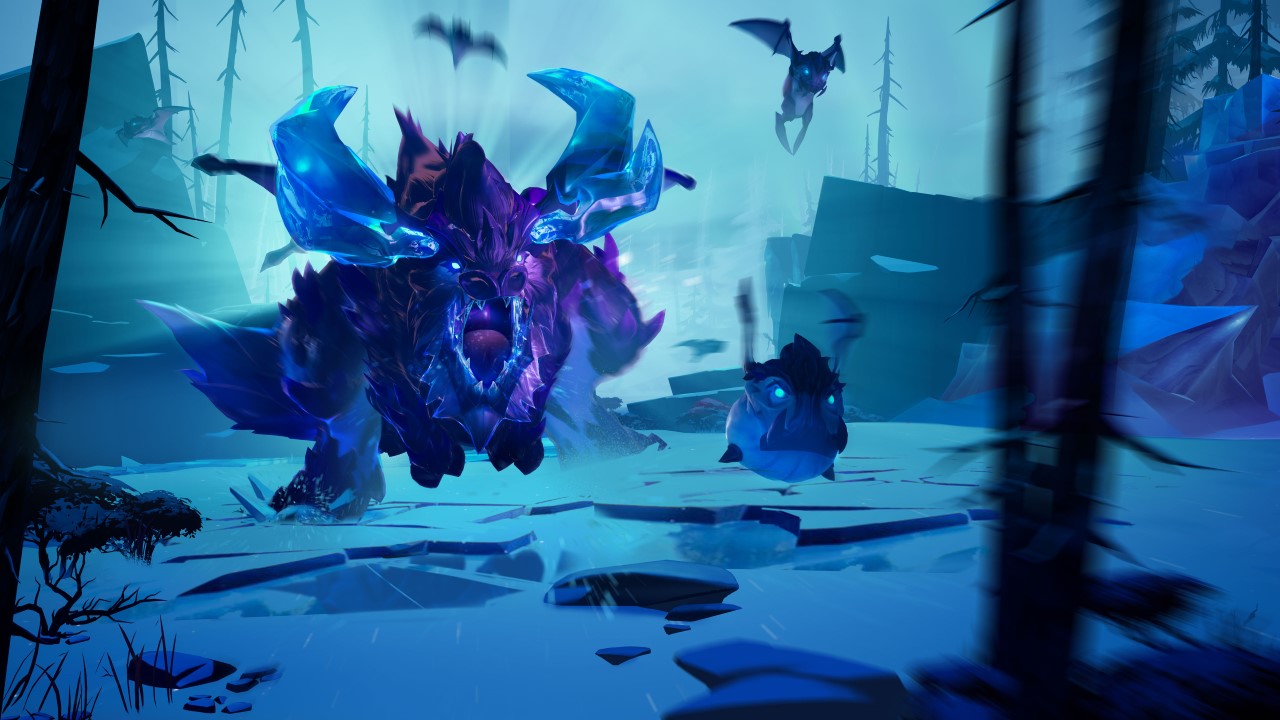
Dodge, strike, dodge again.
The first thing most players will notice about Dauntless’ combat is how much more arcade-y it is as compared to Monster Hunter. Where the latter is all about perfect positioning and timing, Phoenix Labs decided to lean into a more aggressive approach. That’s not to say positioning and properly attacking are not critical here in Dauntless – they most certainly are – but thanks to a dodge roll loaded with invincibility frames and punchy combos Phoenix Labs encourages players to get in close and to press the attack.
All the melee weapons have a diverse array of combos – from heavy swings empowered with ammo on the hammer, to the agile push-pull of the chain blades. Dauntless wants you in the middle of the brawl; even the ranged weapon, the Ostian Repeaters, deals more damage the closer you are to the behemoth, and reloading next to one empowers your attacks and abilities for a short duration, ensuring even the ranged players are engaged with the action. The weapons also possess a variable amount of special attacks that can be unlocked through play that can provide group buffs, enhanced part damage (to better break off the pieces from the behemoth you need), or straight nukes to the behemoth’s health.
Behemoths, especially after the initial batch of starters, constantly move and attack, and have clear telegraphs for their strikes. If a Shrike (think of an Owlbear from D&D) jumps into the air with its arms raised you need to be ready to roll away as it lands. If an Embermane leaps backwards out of the bout and draws its head in to take a deep breath you need to brace for a stream of fireballs. Fights in Dauntless feel more like raid or dungeon encounters in an MMO, with various mechanics thrown in that slayers need to deal with or face defeat. If Boreus has summoned his winged minions then players need to divert and deal with them; not only to put an end to their volleys of frost projectiles, but to gain an empowering buff against the behemoth itself.
Combat in Dauntless can often feels inspired by action games like Devil May Cry, with behemoth design giving it an action-MMO flavor. The dodge roll does consume stamina; a-la action-RPGs of the last decade, so it’s critical to understand not only a behemoth’s attack pattern, but your own combos and when you can dodge between them. This focus on aggression gives Dauntless a flavor unique onto itself, and when battling a behemoth it become apparent why Phoenix Labs wanted their game to enable these battles as soon as possible. It is a visceral joy to conquer each of Dauntless’ nineteen behemoths, with few ever feeling like a reskin of another (the early behemoths and their later elemental/dire counterparts aside).
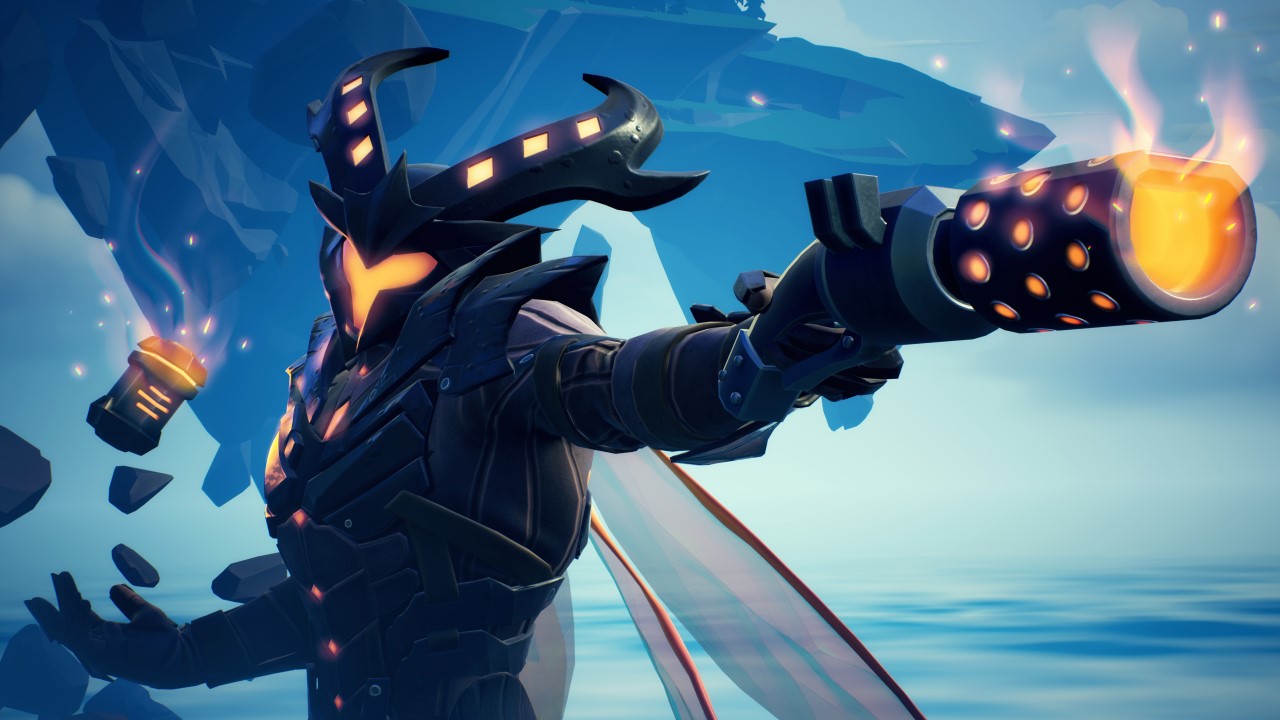
Layered on top of the weapons and fight mechanics themselves is the lantern, a piece of equipment slayers carry into battle that typically offers both a passive buff and an attack. Slayers charge these lantern abilities by attacking, and the more aggressive they are the faster they can recharge and reuse their lantern. Having trouble avoiding damage? Grab Skarn’s lantern for a personal shield and a rock tornado that deals damage. Need extra fire damage for a frost behemoth fight? Embermane’s lantern will do the job with a fireball that explodes after a short duration.
Instead of having a set limit on how often a slayer can be downed, Dauntless instead uses a Danger Meter to establish a possible fail state. Slayers can either rez one another, or use one of their three rez stims to pick themselves up, with decreased health each time they are rise back into the fray. Every time a slayer is downed they will increase the Danger Meter, and the longer they stay downed the higher it will climb. Eventually, at 100%, slayers can no longer rez each other (but, they can still use their stims if they have them). Once all slayers are downed and no one is able to get back up the hunt ends.
Slayers who avoid being downed are awarded more loot, and it’s much more difficult for a single player to fail a hunt for the entire team (though, not impossible). Being downed is discouraged, but it’s not near as punishing as it is in competing games. This approach allows players to more liberally embrace the in-your-face ethos Dauntless has designed its combat around. Having a behemoth round-house you into oblivion will make the hunt harder, but it isn’t the end of the fight. So long as one person can survive till the end, everyone leaves victorious (though the group rank at the end may be an abysmal “E”).
Combat is the absolute focus of Dauntless, and it’s clear Phoenix Labs wanted to pave a path of least resistance leading into it. It’s why the maps are not mazes, why the most you need to do prior to a fight is craft up equipment and consumables for your loadout, and why jumping into a brawl is as simple as it is intuitive. It’s why one of the endgame modes is a time trial for rewards (aptly named “Trials”), begging players to master the various fights and weapons. Dauntless knows its combat is great, and it wants players engaged with it more often than not.
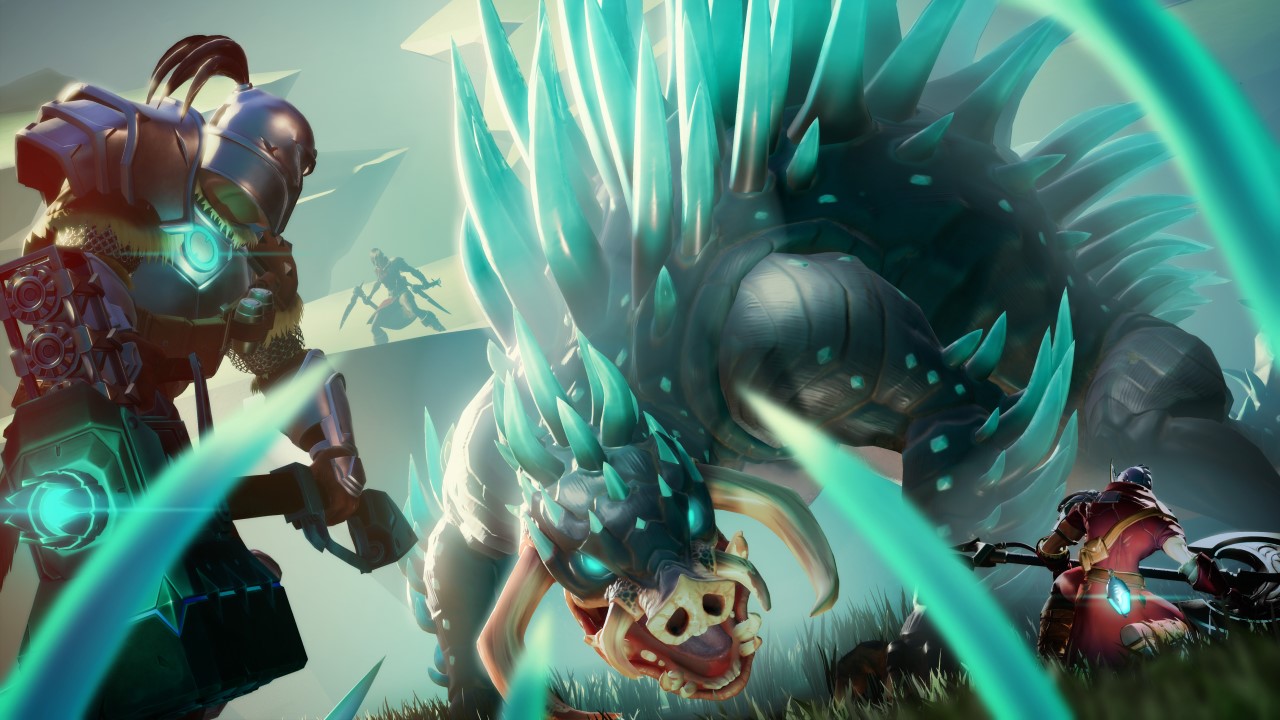
A straight-forward grind.
This direct approach to hunting means its easy to plug in and chain hunts back to back; to grind out the behemoth parts you need for your next upgrade on your personal checklist. Not only does the game make it clear in the UI if your gear is up to snuff, but it tells you what elemental affinities are needed to boost defense and attack. At a glance, a player is able to see who they need to tackle and what equipment ranking they need to do so. This feeds into the established hunting routine typical of the genre, but it’s transparent from the start what needs to be done to progress. Need to take down a shock behemoth, but are undergeared? Well, looks like you need terra orbs to finish your Skarn set, so go ahead and click that Terra Behemoth Patrol in the map to farm up the mats you need.
Dauntless in reasonably designed to accommodate new players and veterans alike. While the initial grind is to-the-point, there are systems in place to reward long-term players for pursuing greater and more dangerous behemoths. This starts with the gear itself: while the early game has slayers focused on acquiring and upgrading gear of various elemental affinities to better boost their power against the various behemoths on offer, each beastie offers up a set with traits built in that support a variety of builds. Hellion and Charrogg armor sets are both fire-affinity sets, but they offer different traits, such as Rage for the Charrogg set and Molten for the Hellion’s.
Upgrade a piece of armor to plus-five, and the traits increase. Continue doing this and eventually an armor set not only boosts your defense, but offers maxed out trait bonuses. It doesn’t end there; each piece of armor comes with a slot for a Cell, an item that provides additional traits to an equipped piece of armor, weapon, or lantern. The majority of items in the early to mid-game have set slots for one of the four cell classification, so not only do players have to factor in a piece of equipment’s baked in traits, but the ones they can slot into it. Slayers can find these cells as post-hunt rewards, within slayer cores awarded via the Hunt Pass (battle pass), by increasing their Mastery Rank, and from combining lower ranked cells at the Middleman into higher ranked ones.
The limitation here is simple: a trait offers no additional bonus after rank six, meaning slayers looking to fine tune their builds will mix and match armor sets with various cells to max out as many traits crucial to their build as possible without going over six points in a single trait. There is nothing stopping a player from going above six, but due to the power being capped at that level, it’s a waste to do so. This adds an additional, more fulfilling grind for mid to late-game players to pursue outside of simply farming all their equipment and calling it a day, and it can make the difference between rapidly massacring a behemoth, or turning the encounter into a slog.
Remember how I mentioned a slayer can earn cells from cores awarded from Mastery Ranks? Yeah, that’s yet another way long-term players are rewarded for their time and commitment. As players kill more behemoths and use their weapons they will increase their mastery against those behemoths and with that weapon archetype. This contributes to progression in a couple of ways.
First, general mastery rank ups provide those cores with cells, and the higher the mastery rank the better the quality of the core (and therefore the cells within). Second, weapon mastery rank increases not only allow players to upgrade their weapons (with mastery rank capping the highest tier a weapon type can reach), but provide mods and additional special attacks that can be equipped to better match a player’s build and combat preferences. Third, behemoth mastery allows armor to be upgraded further, much like weapons. And, finally, these all contribute to a slayer’s global Mastery Rank, which confers additional loadouts to save configured equipment to, more health and stamina, and slayer cores among other things.
You will always feel like you are progressing in Dauntless. Whether it’s because you finished farming an upgrade to your armor, unlocked a new mod via your mastery rank, or found the right cell for your build; you are always making headway on something that will contribute to your growth as a slayer. Thanks to Dauntless’ more straight-forward approach progression can be achieved in as little as ten-minutes, perfect for those who want the Monster Hunter experience, but lack the time to get into those games.
It’s easy to develop a personal to-do list, set your goals, and target them in both short bursts of play and during longer marathons. Because of Dauntless’ focus on combat, it’s not difficult to find yourself plugging away at the game longer than planned. I often found myself queuing for a tussle, and another one after that. It’s an easy game to lose time to thanks to Phoenix Lab’s focused dedication towards purging the busy-work often found in Monster Hunter. Veterans of those games may not care for such a direct approach to behemoth slaying, but this deviation is what makes Dauntless unique. It’s the yin to Capcom’s yang.

Performance has come a long way since closed beta.
For the record, I was one of the first people invited into Dauntless’ closed beta ages ago, and while I enjoyed it, I bounced off it and into other games at the time. While I am more than happy with the improvements Phoenix Labs has made to the gameplay loop, and all the additional content they have added over the years, the one area they have always struggled with the most was performance.
The game utilizes a stylized, almost cartoony art direction, and it looks great at max or low settings. It feels like Phoenix Labs have adopted the Blizzard approach to design, and by that I mean they opted to prioritize style over fidelity. Rather than push hardware towards its breaking point, the game is able to scale well across multiple configurations without looking like utter ass at the lowest settings, thanks to their focus on art style over realism. That doesn’t entirely mitigate problems with performance, however.
To put it bluntly: the game ran poorly for the longest time. Even with top-end PC hardware, reaching a stable thirty-frames was often a challenge, and for a time there weren’t any real graphics settings to tweak outside a single quality preset. I am happy to report performance has been largely addressed since the beta, and further more since the official launch, but there is still room for improvement.
As of writing this, PC players can finally tweak a decent selection of graphical settings, set their FOV, adjust the internal resolution (though the slider would benefit from displaying actual numbers), and can run the game at an unlimited frame-rate. With a 1080ti and 8700K I was able to hit a consistent 165 FPS during hunts at 1440p and maxed settings. So far, damn good. The more stylized art design certainly helps the game, allowing Phoenix Labs to push the pretty without relying on hardware breaking rendering techniques, but there are still issues with CPU load. While not as apparent on my system these days, it continues to be their albatross; ever since those early days in closed beta.
Nowhere is this more apparent than the console editions of the game. All versions of the game, including the PS4 Pro and Xbox One X editions, run at thirty frames per second. While this is fine, maintaining thirty frames can prove problematic at times, especially in Ram’s Gate. It’s not uncommon to see the game stutter and hitch in the hub, and while rarer on hunts, it does occur.
The recently launched Switch port fairs the worse in this regard, though thankfully it’s mostly in Ram’s Gate. On the Switch the hub can outright crawl at times, and I can’t fault prospective players for loading into the game then promptly bailing. The good news to this, though, is that the Switch version runs leagues better during hunts, where performance matters the most.
That’s not to say it’s perfect: frame hitching occurs whenever a behemoth is landing a large, alpha-particle heavy attack, and the start of every hunt frequently sees the game freeze for a brief moment as everything loads in. Frames also drop below thirty, usually into the mid-twenties, during intense points of a battle; yet, I noticed the same issues on my Xbox One X. Additionally, load times are lengthy on the Switch, but Phoenix Labs has confirmed on Reddit that they are looking into using the Switch’s boost mode to improve them.
All and all, having bounced between the Switch docked, in handheld, and even my Xbox, I firmly believe the performance issues lie less with the platforms themselves and more with the ongoing battle to rein in Dauntless’ CPU usage. The developers have said on Reddit that they are looking to further improve performance, especially for the Switch port. I’m confident they can pull it off, considering how far the game has come since closed beta. Currently, all the console ports are playable and enjoyable – even the Switch port – but more work certainly needs to be done.
Of final note: the music and sound are great across all platforms. Each behemoth seems to have its own orchestral track that helps set the mood, and all their various attacks and cries are audibly telegraphed. Positional audio works well if you have a PC with it enabled, but I didn’t seem to notice it much on console, which is a bit unfortunate when you consider how often behemoths flank around or above you. I may have simply missed it (my hearing has been decaying over the years thanks to flying on an old 707 for my military work), but positional audio should be included in a game like Dauntless.
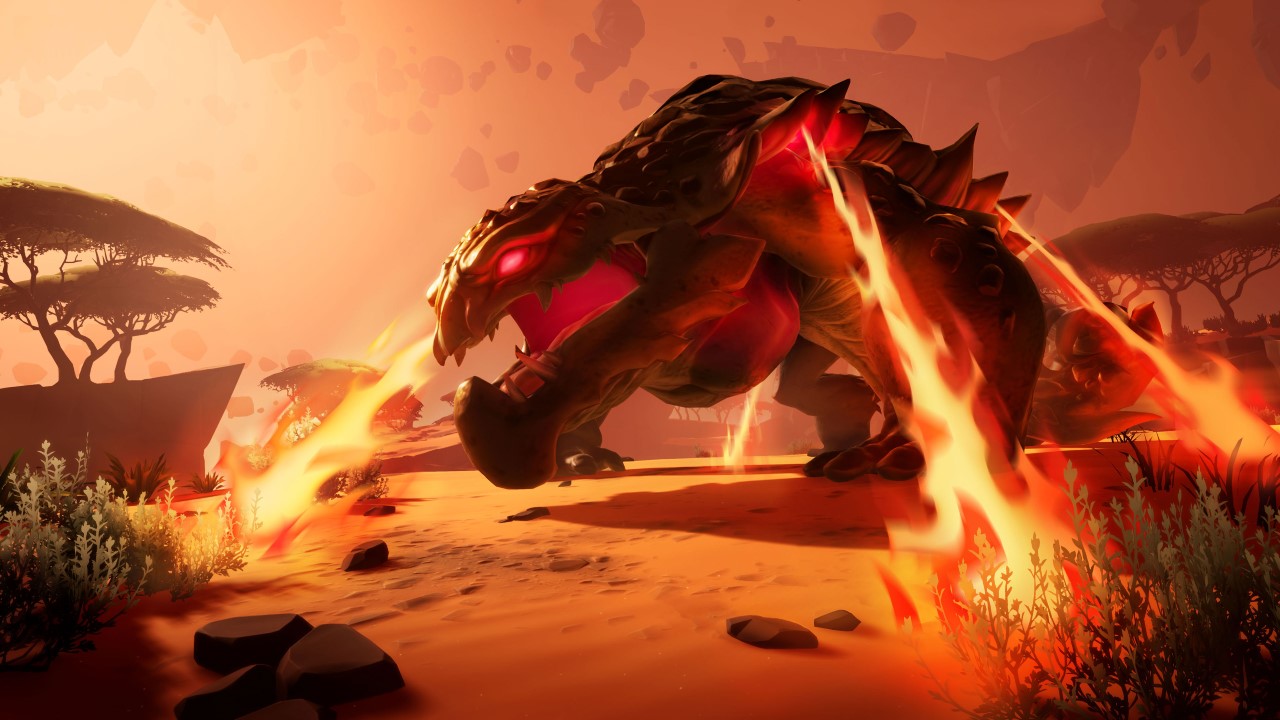
Concerning Free-to-Play
Not all free-to-play games are monetized the same, and for every fair-handed model like Warframe’s and Path of Exile’s there are hundreds of exploitative titles that will stop short of robbing you blind to make a buck. Players will be happy to hear then that Dauntless has charitable and non-invasive monetization.
It all starts with the Hunt Pass, Dauntless’ version of the now ubiquitous Battle Pass. At a conceptual level it’s nothing anyone hasn’t seen before: there are multiple tiers of rewards (up to rank 50), and they are split between a free track and a paid one. The paid one is bought with Dauntless’ real-money currency, Platinum, which can be earned in the free track. Additional tiers can be unlocked with more Platinum, but it never feels required for reasons I’ll list below. It averages out to $8 USD for the pass, and it typically lasts fifty days.
Leveling the pass isn’t a pain, considering there are two ways to do so. The first is the easiest: each season there will be ten little items scattered about Ram’s Gate that are easy to find. Collecting all ten of them a day nets players fifty experience towards their Hunt Pass, and considering each level requires a flat one-hundred exp to level, players can get halfway through their pass simply by logging in daily and taking the five minutes required to grab the ten items.
The second method ties directly into gameplay, and it’s rather flexible. Outside of quests, players have access to Bounties, which are simple objectives that award Hunt Pass experience when completed. Most are easy, and doll out twenty experience upon completion. Some are a little harder, but come with either forty or one-hundred experience attached (a full Hunt Pass rank, essentially). Only four bounties can be pursued at a time, and the player needs to spend a Bounty Token to generate a selection of three bounties to choose from. Bounty tokens can be found as rewards in hunts, are often earned in the new Escalation mode, or regenerated daily.

The Bounty objectives are nothing cosmic. They will either task a player with gathering X amount of an item, killing X amount of certain a elemental affinity, or completing X amount of hunts with a specific weapon (though, a good chunk of these allow you to use whatever weapon you want; you’ll just progress faster with the recommended weapon). There are a few for dealing specific types of damage and what have you, but because you always draw three bounties to choose from it’s easy for players to pick the ones they want. Bounties last all season, so there isn’t a daily or weekly timer attached to completing them. You can go at your own pace, which makes the Hunt Pass feel worthy of pursuit.
As for the actual rewards, they are largely cosmetic. There are slayer cores, some platinum, and even Ace Chips (a currency used to speed up the Middleman’s cell fusion process), but nothing feels overtly pay-to-win or game breaking. This includes what’s on offer in the store itself. Items are either cosmetic glamours for your equipment, emotes, landing animations, or “convenience” items that affect systems detached from the hunts and general grind. It is similar to Warframe’s approach in a way; sans being able to buy equipment outright. In the end, you still need to play the game and put the work in if you wish to progress, and the items for sale pad out the few time-gates in-game (time-gates that never block or hinder normal, free progression in any terrible way).
All said, Dauntless’ monetization is solid, but players should note that Platinum bought on one platform can’t be used on another (PC and Xbox aside; they share Platinum with one another). Thanks to cross-play and cross-progression, I found it easier to use my PC for Platinum purchases, but players will ultimately gravitate to their main platform for their personal transactions.
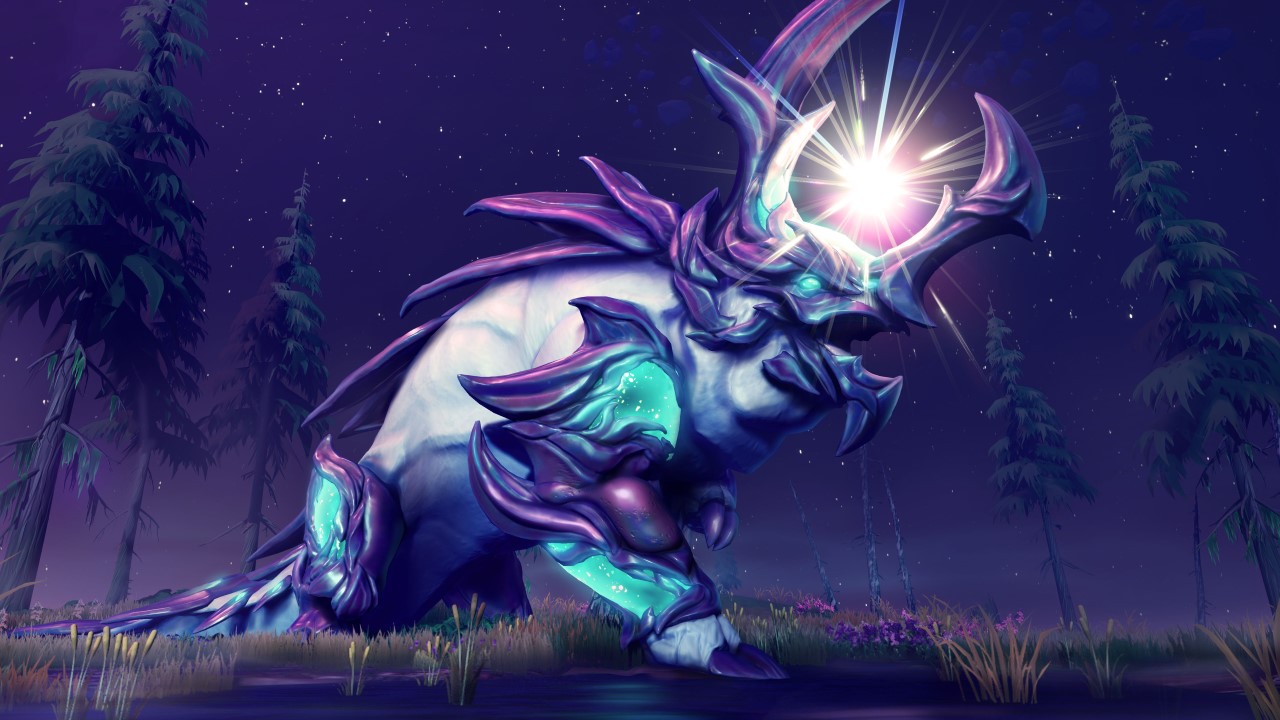
The Verdict
Dauntless may seem like “novice Monster Hunter” at first blush, but a deep progression system and focus on aggressive combat sets it apart. If Monster Hunter is all about the satisfaction of the hunt, then Dauntless is obsessed with the thrill of the kill. It offers up an excellent alternative to Capcom’s juggernaut, allowing new players a chance to experience this genre with minimal barriers to entry. Veteran hunters will find plenty to enjoy here too, with the rich progression system and refined combat offering plenty of avenues to flex their mastery. The frictionless drop-in/drop-out design means even the most stalwart or casual of slayers can find the time to enjoy a rapid bout of behemoth slaying.
If there is a clear negative trait hampering Dauntless right now it’s the performance. Thankfully it’s more of a sprained ankle situation than a full blown heart attack, and I am confident Phoenix Labs will polish it to perfection sooner than later. But, for those jumping in on console (especially the Switch), the issues with frame-rate will be noticeable. In a game where split second dodging can be the difference between success and failure, having the performance stall can be catastrophic.
But, the performance issues are not enough to deter players from enjoying the game. Dauntless offers up a pleasant alternative experience within the monster hunting action genre that focuses on the battles without sacrificing the core appeal. If you’ve ever wanted to take down larger-than-life beasties to wear their hides and take down even nastier foes, but felt intimidated by Capcom’s more deliberate design, then Dauntless will prove a great, enjoyable way to finally see what all the monster slaying fuss is about. The fact that it’s a fair free-to-play game makes it all the easier to experience for yourself.
Just be ready for an asskicking, or two.


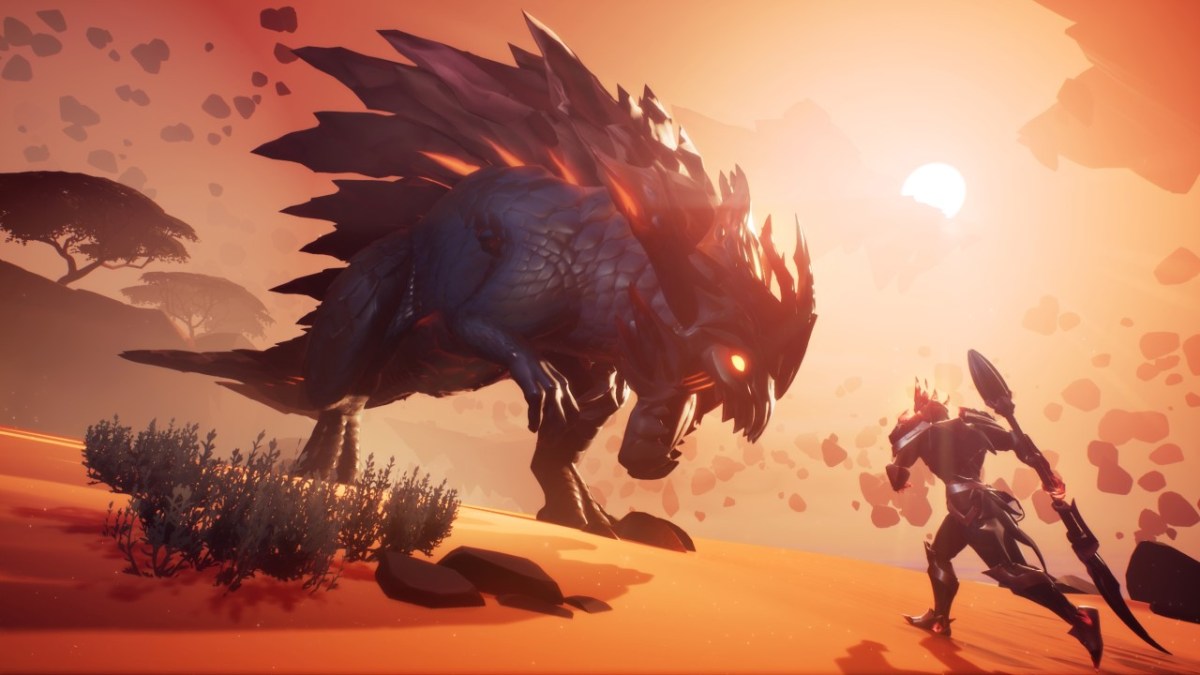








Published: Dec 17, 2019 07:10 pm